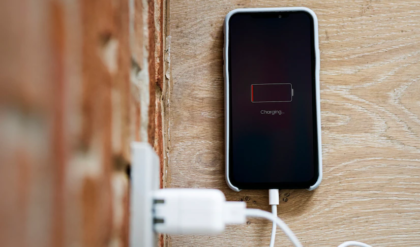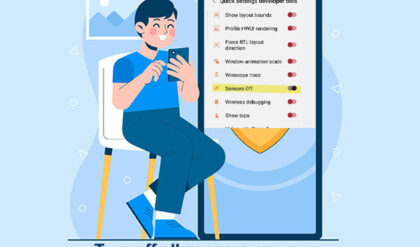Public Wi-Fi networks are a convenient way to access the internet on the go, but they come with significant risks. Hackers can easily access your phone and steal your sensitive information through public Wi-Fi networks. In this article, we will explore the dangers of public Wi-Fi networks and the steps you can take to protect your Android phone from hacking attempts.
What Are The Risks of Using Public Wi-Fi Networks on Your Android Phone?
Hackers are constantly on the lookout for vulnerabilities in public Wi-Fi networks to steal personal information, such as login credentials and credit card details. When you connect to a public Wi-Fi network, you are potentially exposing your phone to cyberattacks.
Some of the risks of using public Wi-Fi networks on your Android phone include:
- Man-in-the-middle (MITM) attacks
- Malicious Wi-Fi Hotspots
- Rogue Wi-Fi hotspots
- Unencrypted Networks
- Phishing attacks.
Man-in-the-Middle (MITM) Attacks
Hackers can use man-in-the-middle (MITM) attacks to intercept your data and steal sensitive information. In an MITM attack, the hacker intercepts the communication between your phone and the Wi-Fi network. This allows the hacker to access your login credentials, credit card details, and other sensitive information.
How To Protect Your Android Phone From MITM Attacks
To protect your Android phone from MITM attacks, follow these steps:
- Use a virtual private network (VPN)
- Enable HTTPS encryption
- Be cautious when entering personal information
Malicious Wi-Fi Hotspots
Hackers can set up a fake Wi-Fi network with a similar name to a legitimate network in order to trick people into connecting to it. This type of attack is called “evil twin” and it’s a common tactic used by hackers to steal personal information or install malware on your device.
Once you connect to the fake network, the hacker can access your device and steal sensitive information or install malware without you knowing it.
Rogue Wi-Fi Hotspots
Hackers can create fake Wi-Fi hotspots that look like legitimate public networks. When you connect to a rogue Wi-Fi hotspot, the hacker has complete control over the network and can access your phone and steal your information.
How To Protect Your Android Phone From Rogue Wi-Fi Hotspots
To protect your Android phone from rogue Wi-Fi hotspots, follow these steps:
- Verify the network’s name before connecting
- Avoid using public Wi-Fi networks for sensitive activities
- Enable the “Verify apps” feature on your Android phone
Unencrypted Networks
Public Wi-Fi networks that are unencrypted, or use an outdated encryption protocol, can be vulnerable to hacking. A hacker can easily intercept unencrypted data and steal sensitive information. For example, if you access a website that requires a login, the login credentials can be easily intercepted by a hacker if the Wi-Fi network is unencrypted.
How To Protect Your Android Phone From Unencrypted Networks
Avoid using them altogether. This means avoiding public Wi-Fi hotspots, such as those found in airports, coffee shops, and libraries, and instead using a secure, encrypted connection.
Phishing Attacks
Phishing attacks are a common method used by hackers to steal personal information. In a phishing attack, the hacker creates a fake login page that looks like a legitimate site, such as a bank or online store. When you enter your login credentials, the hacker can access your sensitive information.
How To Protect Your Android Phone From Phishing Attacks
To protect your Android phone from phishing attacks, follow these steps:
- Be cautious of unsolicited emails and messages
- Use anti-virus software to detect phishing attacks
- Only enter personal information on secure websites
FAQs:
Q: Can hackers access my phone through public Wi-Fi networks? A: Yes, hackers can access your phone through public Wi-Fi networks and steal your sensitive information.
Q: What is a man-in-the-middle (MITM) attack? A: A man-in
Q: How do I know if I’m connected to a rogue Wi-Fi hotspot? A: To determine if you’re connected to a rogue Wi-Fi hotspot, verify the network’s name before connecting. If the name is not familiar or does not match the expected name for the location, do not connect to the network. Additionally, avoid using public Wi-Fi networks for sensitive activities such as banking or shopping.
Q: Is using a VPN enough to protect my Android phone on public Wi-Fi networks? A: While using a VPN can provide additional security and protect your data from man-in-the-middle (MITM) attacks, it is not a guarantee of protection from all types of cyberattacks on public Wi-Fi networks. It is important to take multiple steps to secure your phone, such as enabling HTTPS encryption and being cautious when entering personal information.
Conclusion:
Using public Wi-Fi networks on your Android phone can be convenient, but it also exposes your device to potential hacking attempts. To protect your mobile data, it is important to be aware of the dangers of public Wi-Fi networks and take steps to secure your phone. These steps include using a VPN, enabling HTTPS encryption, verifying the network’s name before connecting, and being cautious when entering personal information.
By following these steps, you can help protect your Android phone and keep your sensitive information safe from cyberattacks.





3 Comments